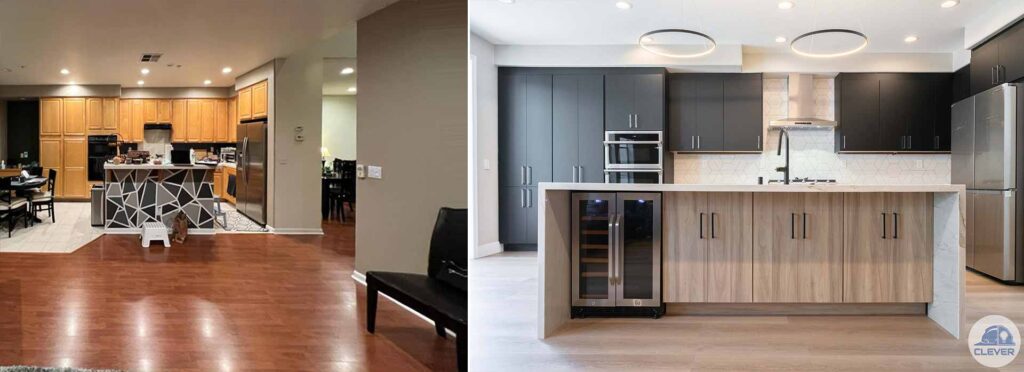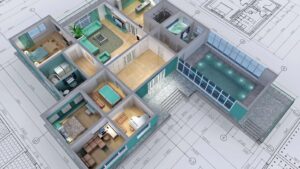The home construction industry is booming, and nowhere is this more evident than in California’s Bay Area.
Accessory Dwelling Unit, or ADU, construction has significantly increased.
In 2023, 28,000 California residents applied for ADU building permits, accounting for 21% of all building permits that year.
From granny suites to garage conversions, Bay Area residents are the perfect choice for constructing a dedicated space for your aging parents or earning rental income.
Read on to learn more about San Francisco Bay Area ADU costs and services and why, when you are ready to work with a professional team to lead you through the entire ADU building process, Clever Design and Remodeling should be your first choice.
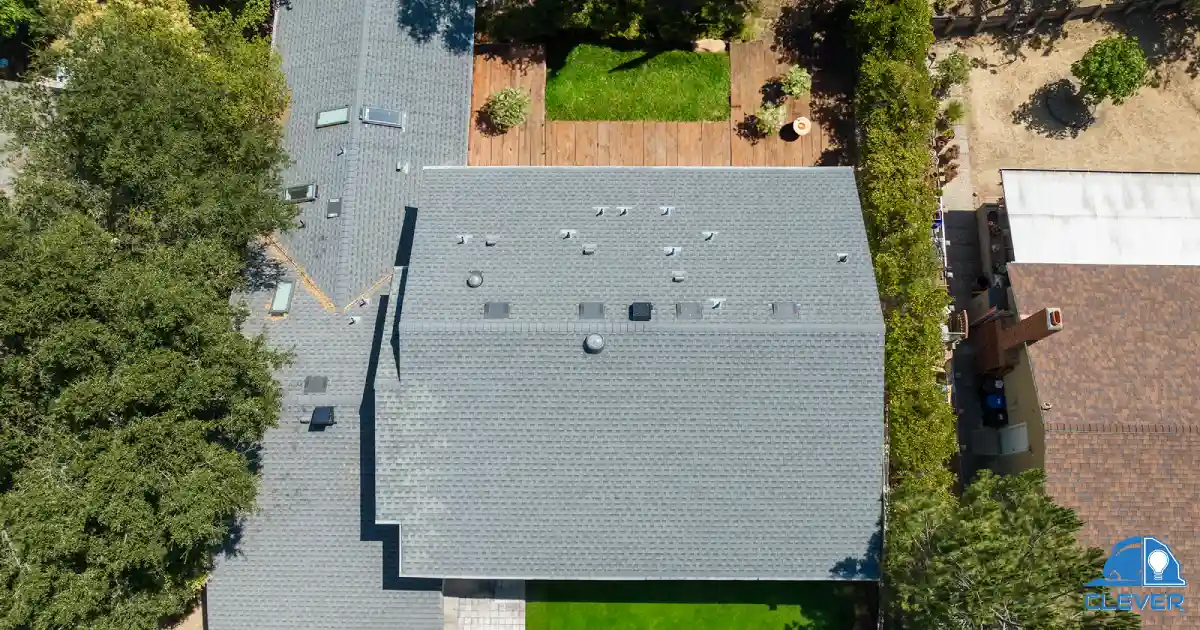
What Is an ADU, and Why Are They Popular in the Bay Area?
Like most of the country, the San Francisco Bay Area is experiencing an affordable housing crisis.
Only one in five households can afford the mortgage or rent in the area, which isn’t surprising when you learn the average home price in the Bay Area is over $1.2 million!
An ADU construction project offers a more cost-effective alternative to traditional housing, but what legally qualifies as an accessory dwelling unit, and how do these structures differ from conventional secondary structures or home additions?
In this article, we will explore all the aspects of planning and constructing an ADU, focusing on factors influencing ADU costs throughout different Bay Area cities, including Palo Alto ADU builders and average project costs.
What Exactly Are ADUs? (Accessory Dwelling Unit)
Known by several different names, from granny flats and in-law suites to backyard cottages or carriage houses, accessory dwelling units are secondary structures constructed on the same property as the main house or structure.
The physical structure can be attached or detached from the main house, but to legally be considered an ADU, it must have a separate entrance from the primary residence and contain a bathroom and kitchen.
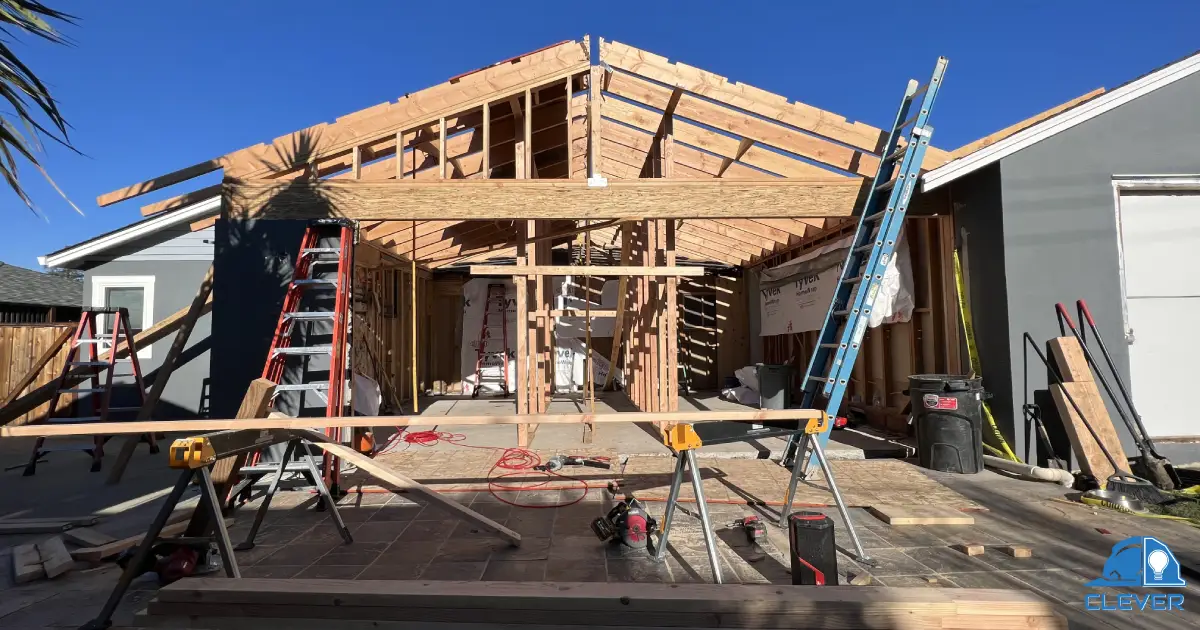
Why are Bay Area Homeowners Investing in ADUs?
Land is at a premium in the Bay Area, primarily contributing to the high housing and construction costs.
The total project cost can be lessened significantly by constructing a structure on your existing property.
In addition to the potential cost savings, there are several other reasons why Bay Area residents are planning an ADU project, including:
- Increased property value. Depending on the size and amenities, an ADU can raise your property values by an average of 30%. In the Bay Area, this equates to $200,00-$500,000, based on your location and the ADU’s size and finishes.
- Rental income. Supplement your income by renting out your ADU.
- Potential tax benefits. Tax breaks are provided to homeowners who construct and rent out their ADUs in many areas.
- Housing for young or aging adults. One of the main reasons homeowners are constructing ADUs is to provide temporary housing for older family members or aging parents.
If you cannot wait to get started, check out this California ADU Handbook (PDF).
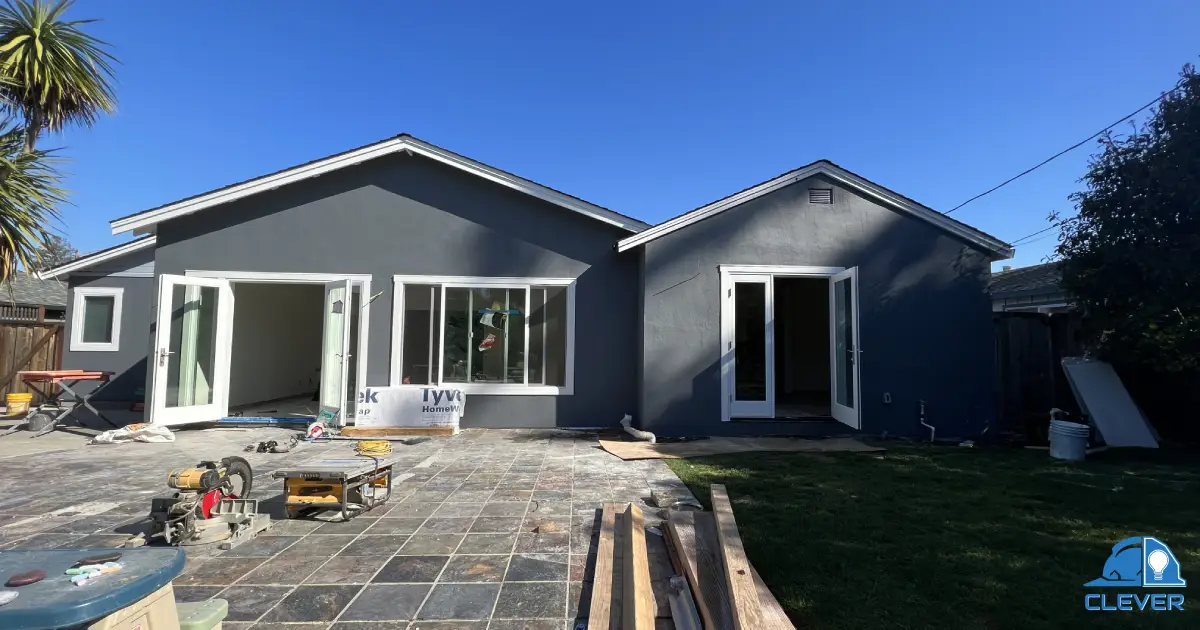
4 Popular ADUs in the Bay Area
The type of ADU directly impacts the overall cost, timeline, permit fees, and nearly all other construction costs.
Here are the four most commonly constructed ADUs in the Bay Area:
- Detached ADU. A stand-alone structure that is not attached to your main house, the total construction cost of a detached ADU is often higher because of the additional permit fees and the need to construct a new foundation, electrical, plumbing, and HVAC systems.
- Attached ADU. An attached ADU is an extension of the existing structure that provides privacy but is more cost-effective because it allows easier access to the existing electrical, plumbing, and HVAC.
- Garage Conversion ADU. Often the most cost-effective ADU type, a garage conversion allows you to construct a legally separate structure inside the existing garage. Ensure your garage is large enough to qualify as an ADU while determining construction costs legally.
- Junior ADU. A junior unit legally features a smaller variety of attached ADUs and smaller square footage than an attached ADU.
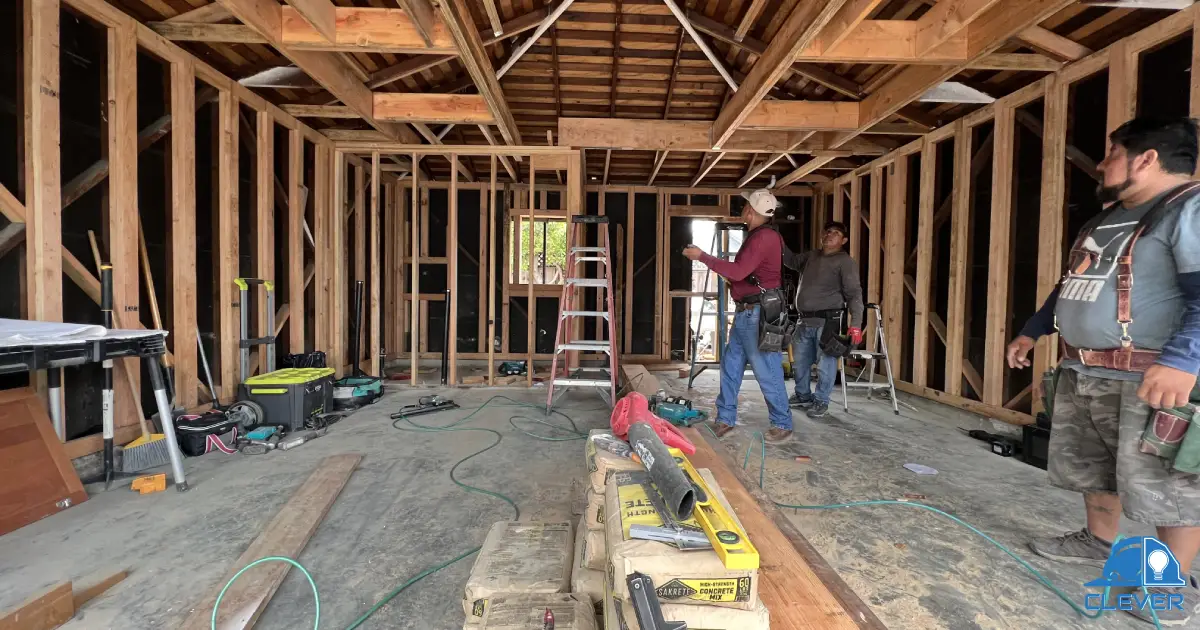
Average ADU Construction Costs in the Bay Area (2025)
Constructing an ADU in the Bay Area costs between $150,000-$475,000.
This translates into $150-$450 per square foot.
Whether you work with Clever Design or another talented construction and design firm, the ADU’s total cost truly depends on a number of important factors, including:
- Labor fees, including subcontractor pricing and day laborer payments
- Material quality and costs
- Soft costs – including permit fees, administrative fees, and financing costs
- Site preparation, like grading and slope correction
Costs Per Square Foot of Your Bay Area ADU Project
- Low-end ADU Cost: $100,000-$200,000 or $200-$300 per square foot.
- Mid-Range ADU Cost: $200,000-$300,000 or $300-$400 per square foot.
- High-End ADU Cost: $300,000-$500,000 or more than $400 per square foot.
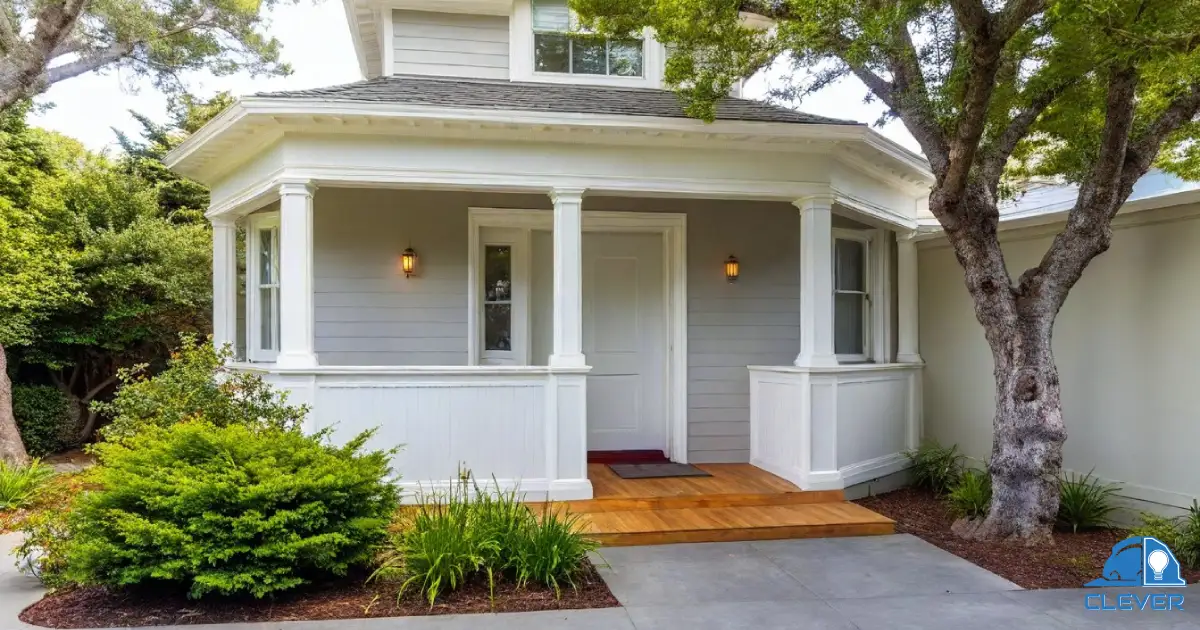
Average Bay Area ADU Cost by Type
- According to California law, there are three main types of ADUs: attached, detached, and repurposed existing structures.
- No ADU can be larger than 1,200 square feet.
Detached ADU (600-1,200 sq ft.)
- These structures can be up to 1,200 square feet.
- Average cost: $200,000-$475,000.
Attached ADU (400-800 sq ft.)
- These structures can be no larger than 50% of the main home’s existing square footage.
- Average cost to build: $150,00-$300,000
Garage conversion (300-600 sq ft.)
- Local California restrictions have changed, and there is no limit to converting existing structures, including garages and basements.
- Average cost to build: $80,000-$200,000
Junior ADUs (JADUs) (200-500 sq ft.)
- Junior ADUs in the Bay Area can be no larger than 500 square feet.
- Average ADU cost to build: $60,000-$150,000
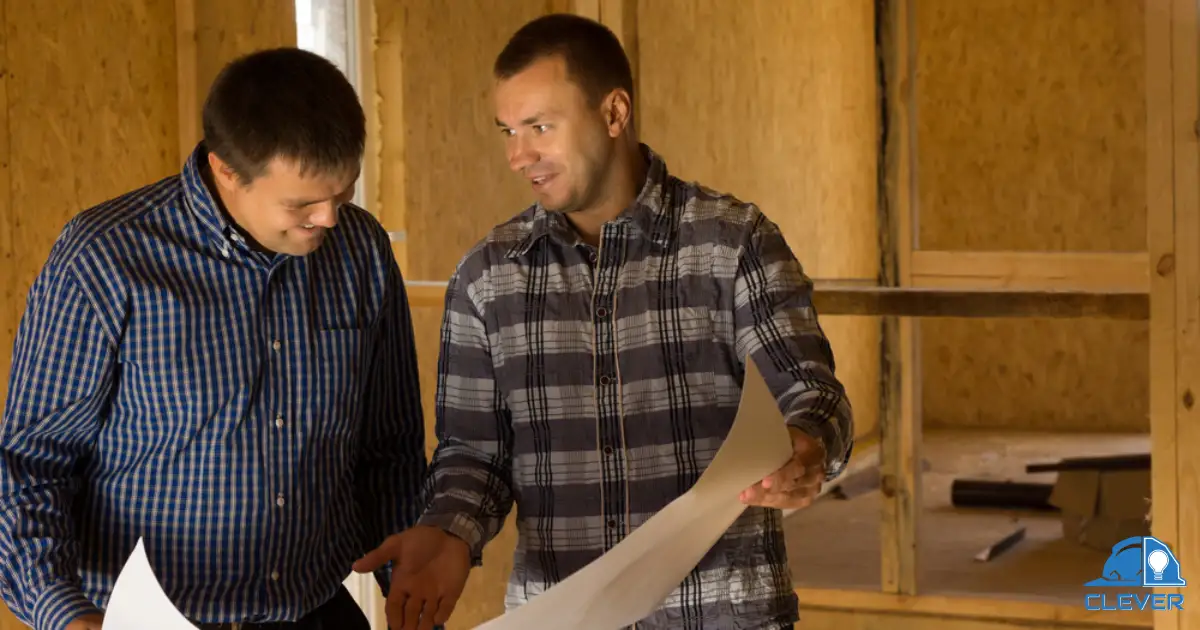
Breakdown of ADU Costs: From Design to Move-In
Several factors must be considered when determining the Design and planning costs for an ADU in Sunnyvale and other cities throughout the Bay Area.
To gain a better understanding of the pricing of a typical backyard ADU project in the Bay Area, here is an estimated cost range based on current Bay Area ADU pricing trends:
Architectural Design and Engineering Fees for Your New ADU Building
Architectural and engineering costs are two of the most significant “soft costs” involved in constructing any size or scope of Bay Area ADU.
These professionals design, draft, and engineer the detached, attached, or conversion ADU plans, and the cost also ensures your building adheres to state and local safety regulations.
- Average cost of architectural plans: $2,000-$40,000+ or $125-$250/hr.
- Average cost of engineering: $1,000-$5,000 or $70-$150/hr.
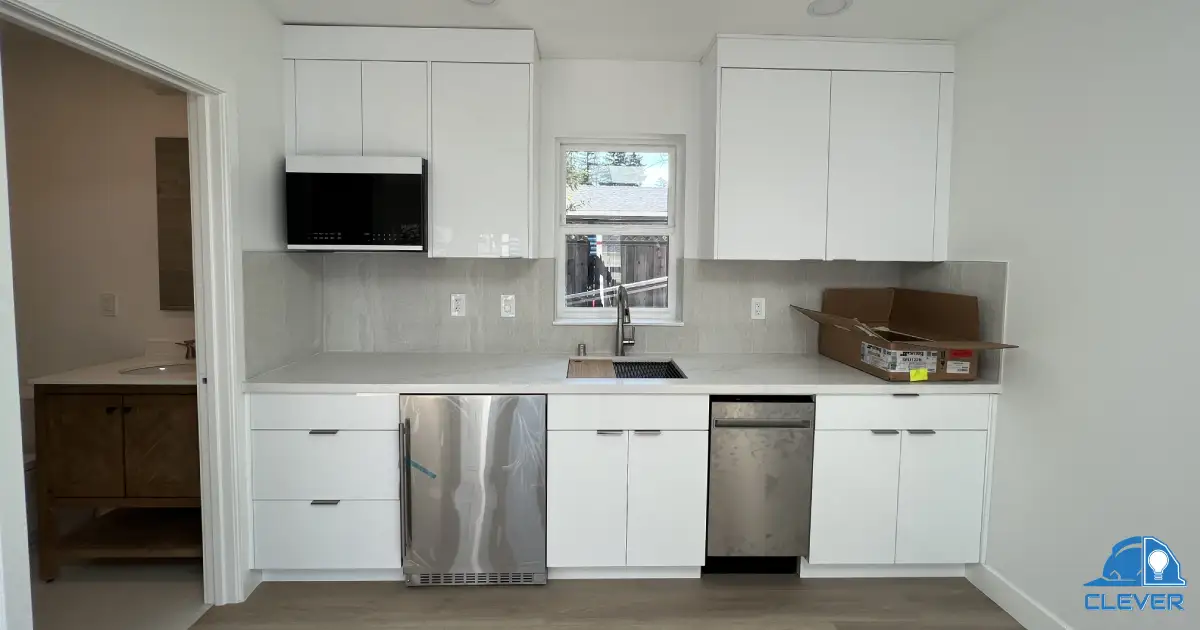
Permits and City Fees
The Bay Area features some of the highest permit and city fees of any area, including California.
Average building permit fees: $8,000-$30,000
Impact fees: Typically waived for accessory dwelling units under 750 square feet. Otherwise, you can expect to pay $10,000+ for larger ADUs.
You may also wind up paying additional costs for zoning and planning, environmental impact reviews, and historic property inspection fees, particularly in some of the more well-known neighborhoods in San Jose or San Francisco.
Other Permit and City Fees
- San Jose. Dependent on unit size. For example, for a new construction attached ADU between 751 and 1200 square feet, you will pay $17,265 for the building application fee, permit issuance fee, miscellaneous department fees, and city taxes. Learn more by visiting the San Jose ADU permitting and process website.
- Palo Alto. Permit fees are based on the city’s “Planning and Development Services” and are broken down into building permit fees, construction and demolition fees, electrical and permit fees, and other miscellaneous fees. The building permit fee is 1.76% of the construction value for projects between $1 and $4,000,000.
- San Mateo. Anticipate paying a flat fee building permit for a new ADU of $2,671, a remodeled ADU of $1,916.15, and a junior ADU of $1,371.12. Additional costs include electrical, geotechnical, plumbing, and miscellaneous fees.
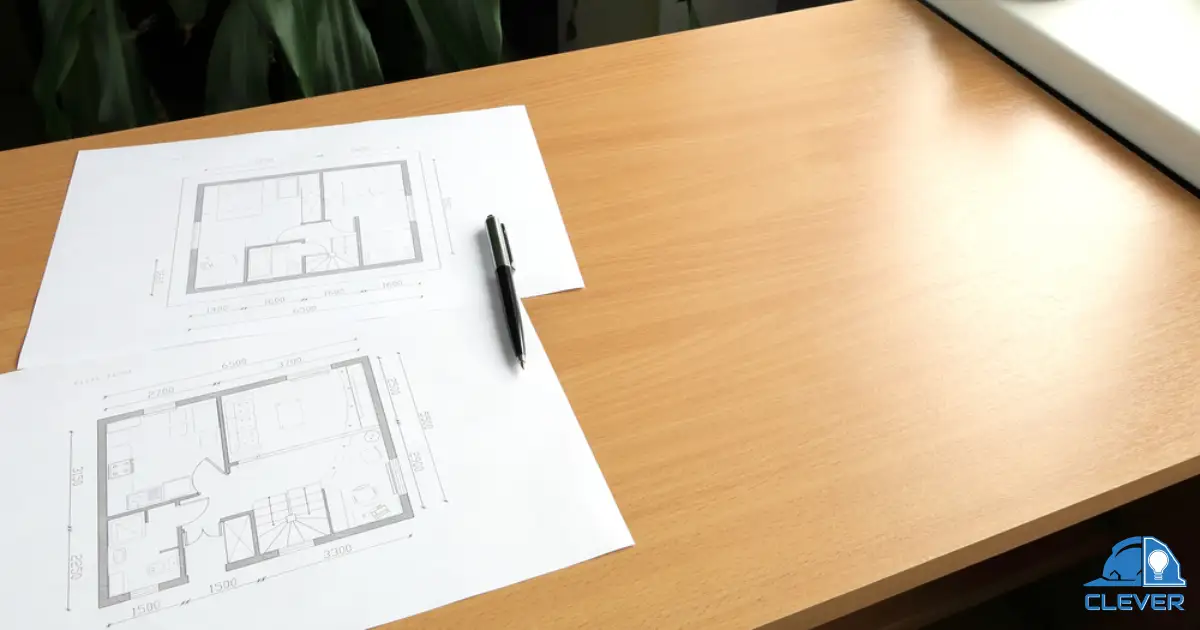
Site Preparation and Other Utility Connections
- Site preparation: $1,000-$5,800 for leveling, grading, and clearing out trees, shrubs, bushes, and any other landscaping that must be cleared away prior to construction.
- Concrete foundation: $5-$40 per square foot. The average 600/sq ft.- 1,200/sq ft. standard concrete foundation will cost $2,400-$30,000.
- Garage and basement conversion ADUs are typically not subject to foundation costs.
- Utility connections: $3,400-$11,400
- Electrical: $1,000-$3,800
- HVAC: The cost of a furnace and small air conditioner is approximately $6,000
- Plumbing: $900-$1,200
- Solar panels: Many homeowners are installing panels to attract potential buyers and renters. Standard 2.5kW panel $2,500-$3,000
Construction Materials and Labor
- Construction materials: 45%-50% of total project cost or $300-$500/sq ft.
For example, in a project with a budget of $200,000, the material costs will be between $90,00-$100,000.
- General contractors: 10%-20% of total budget or $50-$200/hr.
- Subcontractors: $150-$250/day per contractor
- Plumbing: $45-$200/hr.
- Electrician: $50-$100/hr.
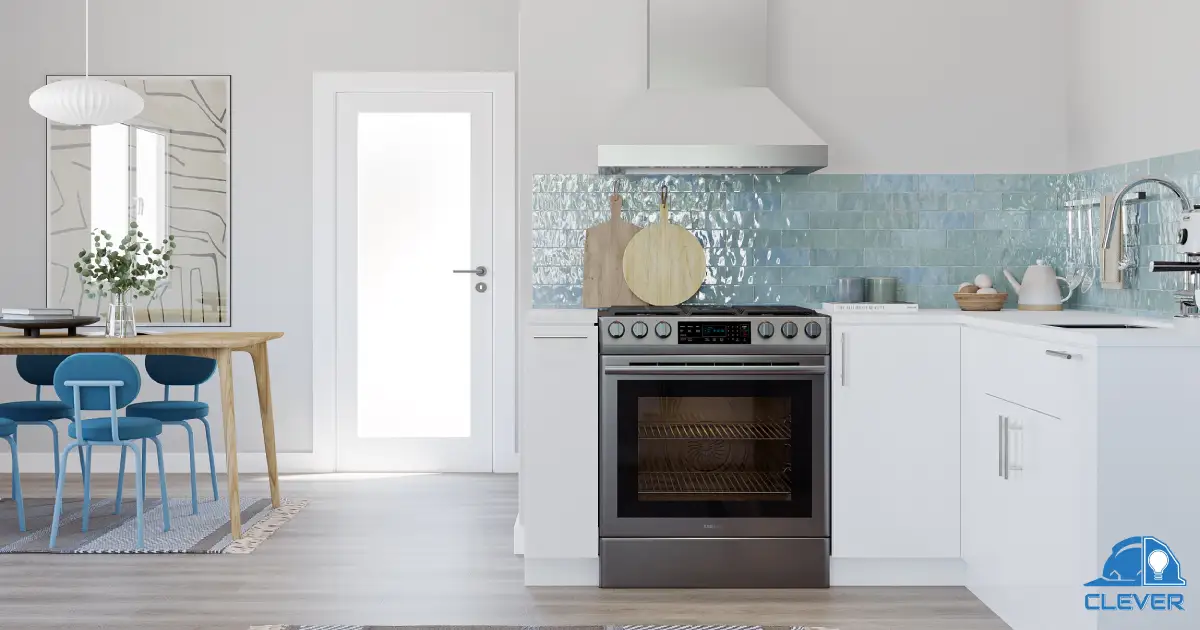
Interior Finishes and Appliances
Framing: Based on the board feet of lumber ($300-$500 per foot of finished lumber.) Homeowners who reside in the San Fran Bay Area pay roughly $25,000 on average to have their ADU or conversion framed.
Projected finishing costs: $10-$60/sq ft. This cost includes installing basic drywall, different varieties of flooring throughout, erecting walls, finishing the ceiling, and installing light fixtures.
Appliances: Estimated costs based on Bay Area pricing for full-sized appliances:
- Basic Full-Sized Fridge. $600-$2,300
- Stove or Range. $600-$1,300
- Dishwasher. $400-$1,200
- Washer. $650-$1,300
- Dryer. $400-$1,200
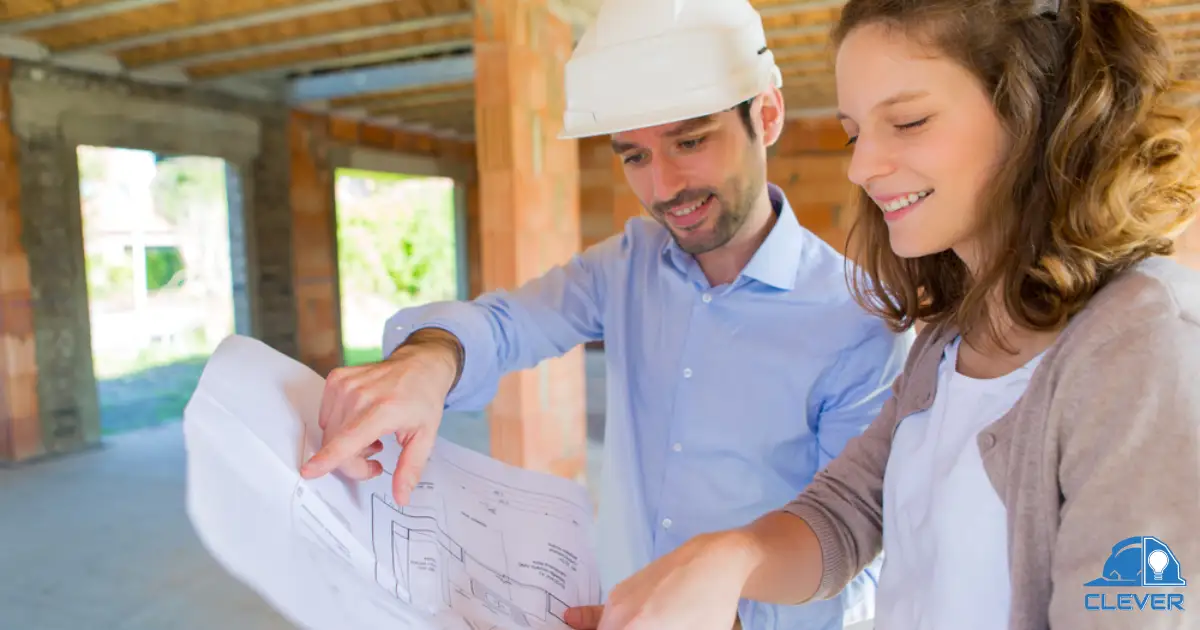
Finishing the Bay Area ADU Project: Pricing Landscaping, Finishing Touches, and Other Additional Costs
Basic landscaping: $4-$12/sq ft. Price depends on the project’s complexity, the homeowner’s vision, materials, and labor expenses.
Finishing touches both inside and outside the brand-new ADU typically include:
- Interior painting (labor and materials): $3- $8/sq ft. The cost depends on wall texture, room size, and paint quality and finish.
- Exterior painting (labor and materials): $2.10-$7/sq ft for basic preparation and painting. Other siding options, from Hardie Board to vinyl siding, will always cost extra.
Other potential costs:
- Post-construction clean-up crew and disposal costs. $0.10-$0.50/sq ft. or $60-$600
- Waste disposal. Dumpster rental costs between $300-$800/week.
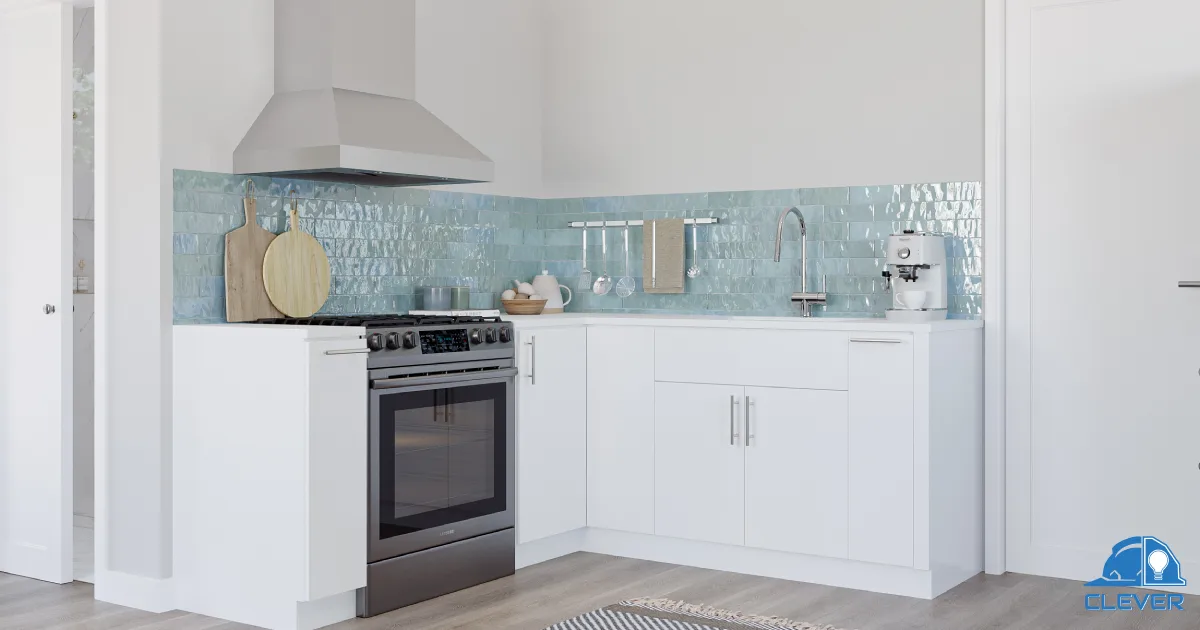
Let’s Explore Cost Variations Across Several Major Bay Area Cities
ADU construction is becoming increasingly popular throughout California, particularly in the Bay Area.
In addition to the square footage, the number of bedrooms, and building-specific costs associated with building an attached vs. detached unit, each major Bay Area city has its own permit fees and typical building costs.
Here is a breakdown of what you will pay to construct the average ADU in seven major cities around the San Francisco Bay Area:
Redwood City
- Average home price: $1.876 million
- Average construction cost: $175,000 or $329/sq ft.
Average permit cost:
- ADUs up to 400 sq ft. – $2,973
- ADUs 401-600 sq ft. – $3,635
- ADUs 601-800 sq ft. – $3,966
Check out this provided Redwood City ADU construction pricing to learn more about the various costs associated with constructing an ADU, specifically in the sprawling Redwood City area.
San Jose
- Average home price: $1.501 million
- Average construction costs: $74,000-$380,000
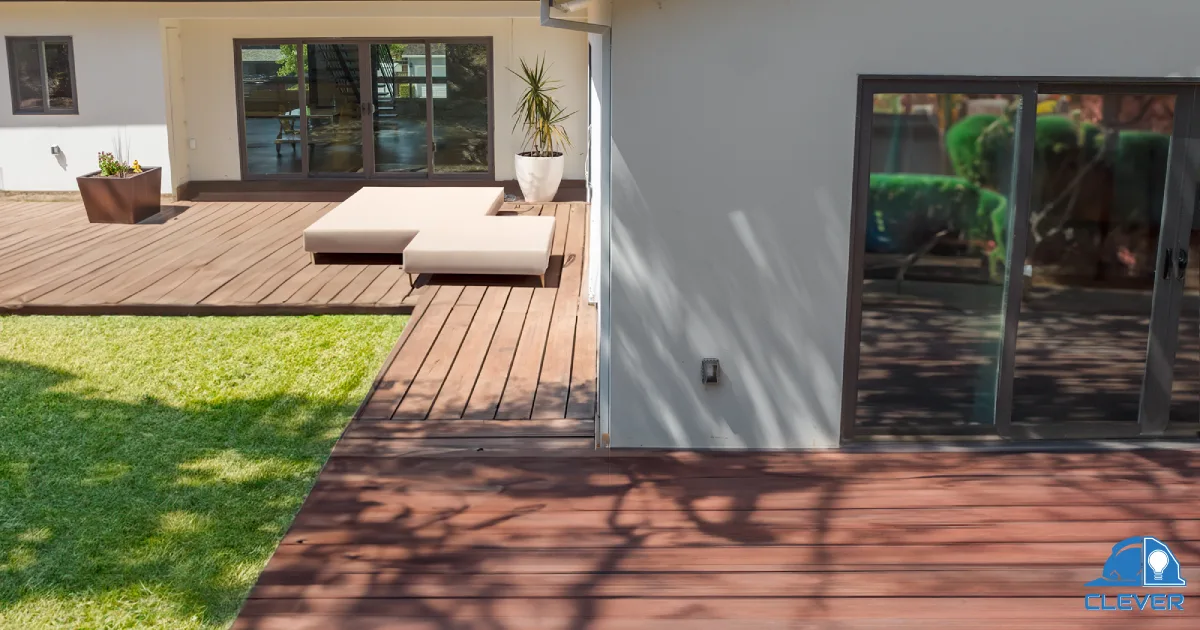
Average permit cost:
Fees are based on some basic factors, especially the project’s scope and complexity.
Homeowners around San Francisco can expect to pay between 6% and 9% of total building costs.
Other permit fees include:
- Plan review fee. $308 per hour
- Permit issuance fee. $211 per hour
- Building inspection fee. $315 per hour
Palo Alto
- Average home price: $3.5 million
- Average construction cost: $150,000-$500,000
Average permit cost:
1.57% of construction value for projects between $1 and $4,000,000
Hillsborough
- Average home price: $4.921 million
- Average construction cost: $175,000-$500,000
Average permit cost:
Minimum fee of $25 and $5 per $1,000 of construction valuation.
Are you a Hillsborough, CA, resident and want to learn more?
Read Hillsborough ADU contractor estimates to help you formulate a construction budget!
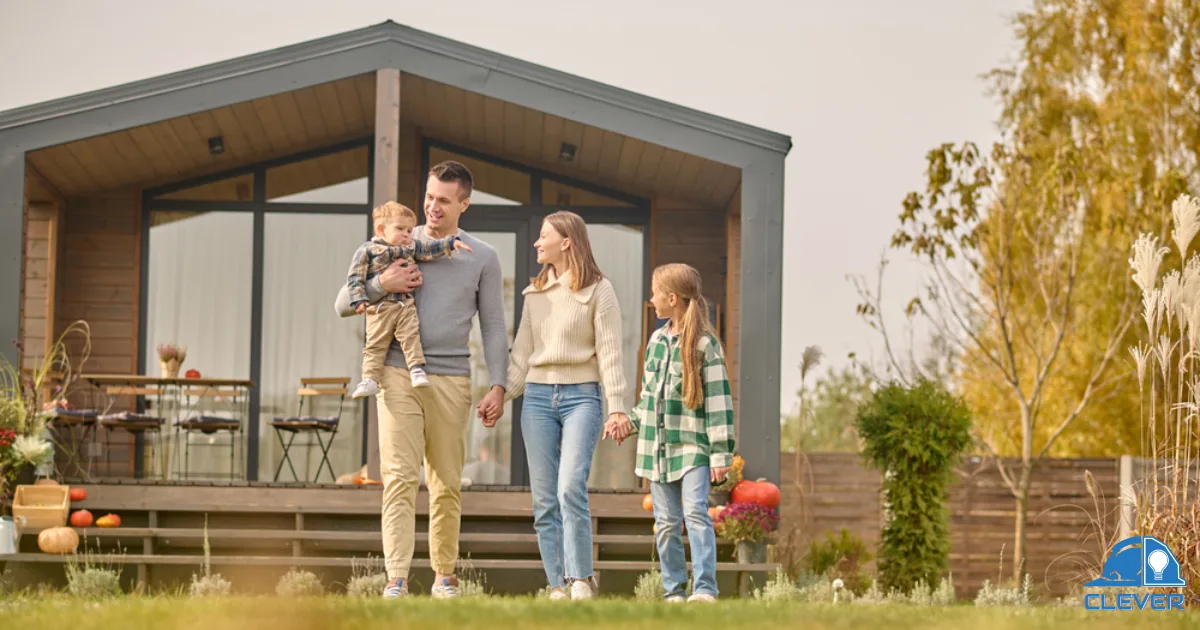
Sunnyvale
- Average home price: $2.01 million
- Average construction cost: $100,000-$400,000
Average permit cost based on project valuation:
- $50,001-$100,000 – $1,523 for the first $50,000 and $16 for each additional $1,000
- $100,001-$500,000 – $2,298 for the first $100,000 and $12.50 for each additional $1,000
Mountain View
- Average home price: $2.774 million
- Average construction cost: $100,000-$300,000
Average permit cost:
$3,500-$6,500, based on construction valuation (total cost of labor and materials).
Learn even more by reading Mountain View ADU construction services.
Millbrae
- Average home price: $1.925 million
- Average construction cost: $180,000-$360,000
Average permit cost based on construction valuation:
- $50,001-$100,000 – $2,761.50 for the first $50,000 and $23.50 for each additional $1,000
- $100,001-$500,000 – $3936 for the first $100,000 and $4.92 for each additional $1,000
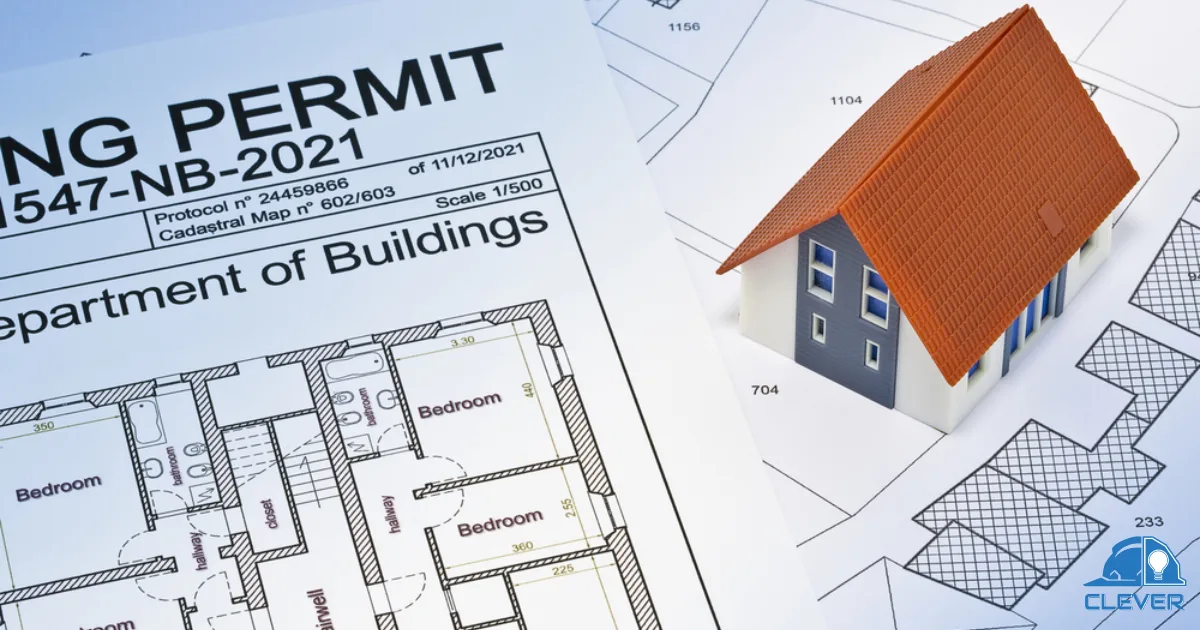
Factors That Affect ADU Costs in the Bay Area
Understanding every factor that influences your ADU’s final cost goes far beyond determining your city’s permit fees or the impact of housing prices on construction costs.
Here is a further breakdown of some often-overlooked factors that will impact the ADU cost across the Bay Area:
Lot Size and Slope
California does not have state-level minimum lot size requirements, and typically, the lot size does not directly impact your ADU’s cost.
The lot size does come into play because if you have a larger lot, you can construct a larger ADU.
Building on a slope, even a slight incline, can pose several problems that will ultimately negatively impact your project’s cost:
- Excavation costs. A deep slope requires additional excavation, increasing labor costs by 10%-20%.
- Utilities. A slope makes connecting to utilities, including water and power, more complex.
- Building regulations. Because of environmental or safety concerns, some cities limit construction based on the incline.
- Soil stability and foundation issues. Soil instability and resulting foundation issues can arise.
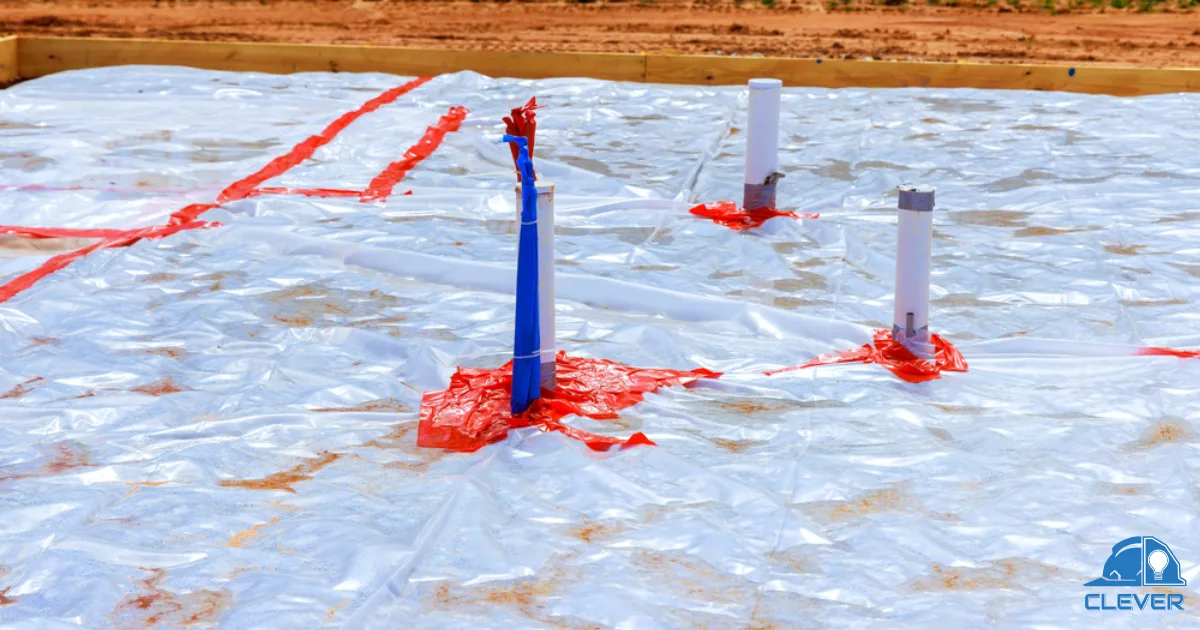
Existing Utility Infrastructure
When constructing a detached ADU, you will incur additional costs when upgrading your utilities.
Typical utility upgrades include:
- Water services: $3,000-$8,000
- Electric upgrades: $4,000-$12,000
- Septic upgrades: $8,000-$25,000
- Gas line upgrades: $2,500-$7,000
Local Building Codes and Zoning Regulations
City-specific building codes and zoning regulations have evolved over the past few years, and the rise in popularity of accessory dwelling units is a big reason.
Because ADUs are creating more affordable housing options throughout the state, there are no longer any nonconforming zoning laws concerning ADUs.
Basically, zoning laws cannot be the basis for the denial of an ADU or JADU permit application.
Like any other construction project, ADUs must comply with local building codes.
Building codes vary, but at a minimum, all ADUs must comply with the International Residential Code, or IRC, require a separate entrance, and maintain the city’s utility, infrastructure, and accessibility laws.
If building code violations are present, you will be denied a building permit until necessary repairs or alterations are made.
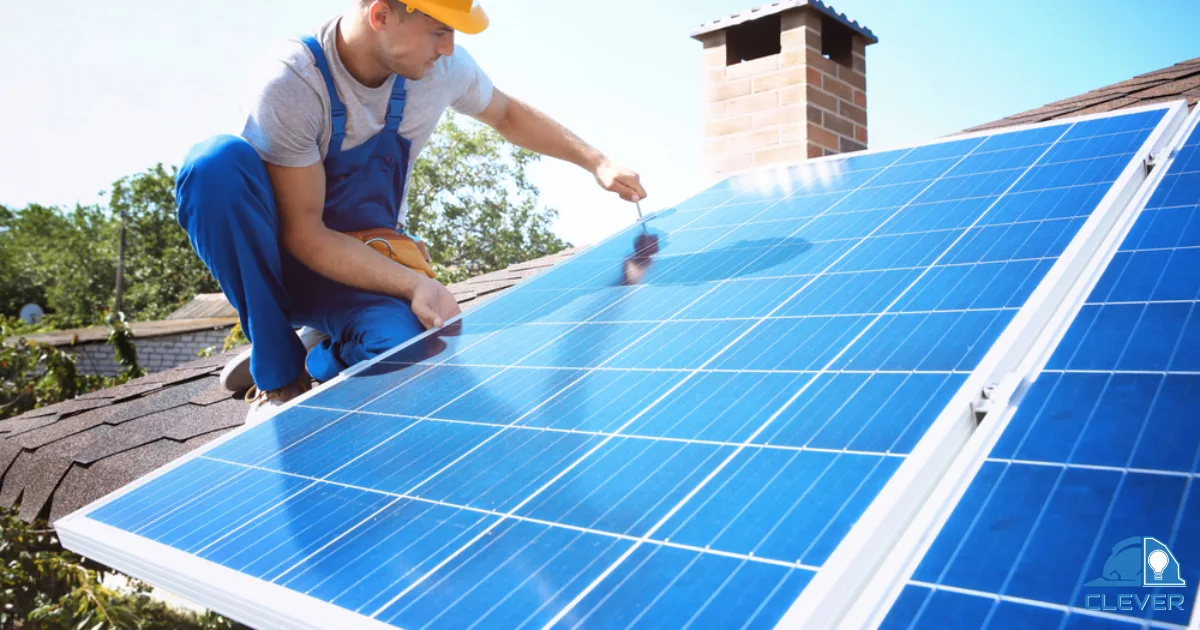
Material Shortages and Labor Rates
Increased demand combined with other factors, including potential tariffs and recent California wildfires, have resulted in a construction material shortage throughout the state.
California already has some of the highest material prices in the country at $250-$400+ per square foot, with some areas experiencing prices higher than $600 per square foot.
Certain materials are particularly at risk, which will increase your building costs:
- Cabinetry
- Plumbing
- Lumber
- Drywall
- Roofing materials
The Bay Area also features some of the highest labor costs in the country.
This is again due to the high demand, the need for skilled laborers, and union regulations.
The average laborer charges $45/hr., and you will pay a skilled general contractor $18,000-$83,000, depending on the project’s scope and timeline.
Custom vs. Prefab Construction
Many major builders in the San Francisco area are offering prefabricated accessory dwelling units, which are built off-site and transported to your backyard, where they are installed.
There are several advantages to choosing a prefab ADU, including:
- Construction time. The assembly is much faster off-site, which can significantly lessen construction time.
- Cost savings. Factory prefabrication equals lower labor and material costs.
- Quality control. As more and more builders offer prefab ADUs, the construction standards and quality control become more stringent.
Depending on your location, the size of the unit, and the amenities, you can sometimes purchase a prefabricated ADU for as little as $50,000.
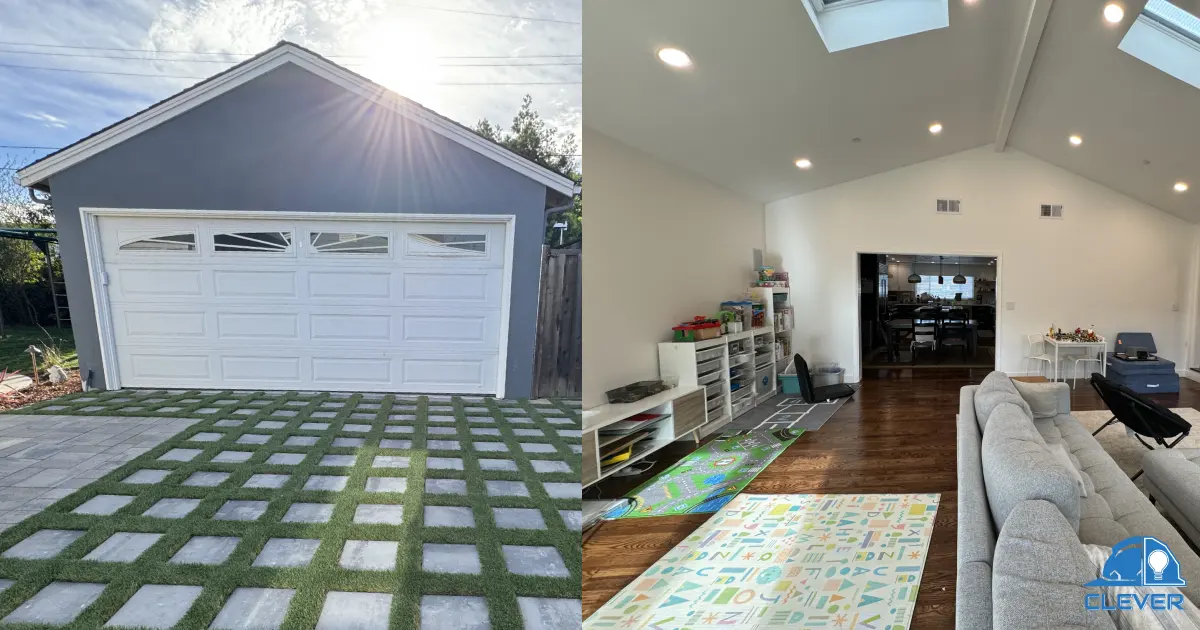
Real ADU Cost Examples and Case Studies
The numbers and estimations can be confusing, so the best way you, as a homeowner, can start unlocking the value of accessory dwelling units is to dive deeper into real-world examples.
Here are three specific scenarios to help you better understand just how much you will be investing in your ADU:
Small Garage Conversion in San Jose
Basic: $20,000-$50,000:
- Attached is ADU or JADU with basic finishes, including drywall, counters, flooring, one bedroom, and a single bathroom.
- Inclusion of a small kitchenette, cost-effective fixtures, and other amenities.
Mid-Range: $50,000-$100,000:
- Allows for constructing a higher-quality attached ADU or a smaller detached ADU with more cost-effective amenities.
- Higher-quality materials and the construction of a full kitchen and larger bathroom, mid-range flooring, and natural stone counters.
Luxury: $100,000+:
- High-end finishes, custom cabinets, luxury finishes, smart home technology, and a more robust HVAC system.
- One or two bathrooms and bedrooms with luxury finishes, including hardwood flooring, stone countertops, and a walk-in spa bathroom.
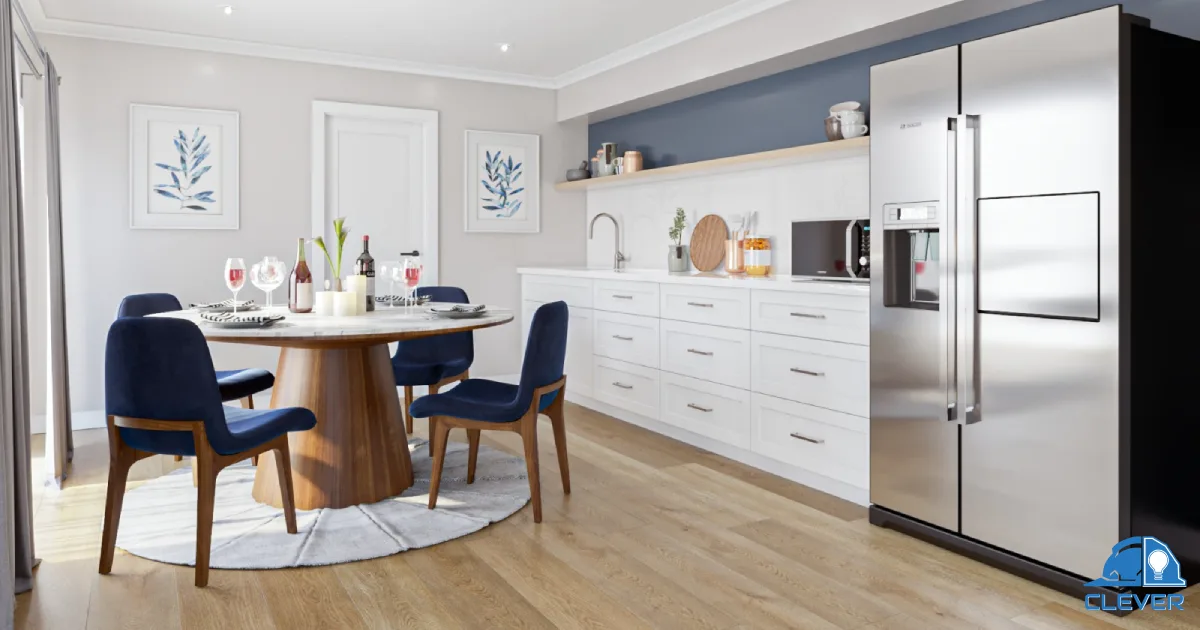
Detached ADU in Oakland with Mid-Range Finishes
The cost to construct a detached ADU in Oakland, CA, is between $100,000-$600,000.
A mid-range project will cost between $250,000-$35,000 and include:
Interior finishes:
- Luxury vinyl or laminate flooring
- Basic natural stone countertops, such as granite
- Stock or semi-custom cabinets for the kitchen and bathroom
- Standard HVAC with lower-range furnace and central air conditioning
- Mid-range energy-efficient appliances
Exterior finishes:
- Stucco or fiber cement siding
- Asphalt shingles
- Lower-quality energy-efficient
Oakland, CA, is unique among Bay Area cities because it offers pre-approved studio, one-bedroom, and two-bedroom detached ADU plans throughout the city.
Choosing pre-approved plans helps reduce costs and expedite the permit and approval processing timeline.
If you would rather create a custom ADU, check out these Space-saving ideas for Bay Area ADUs.
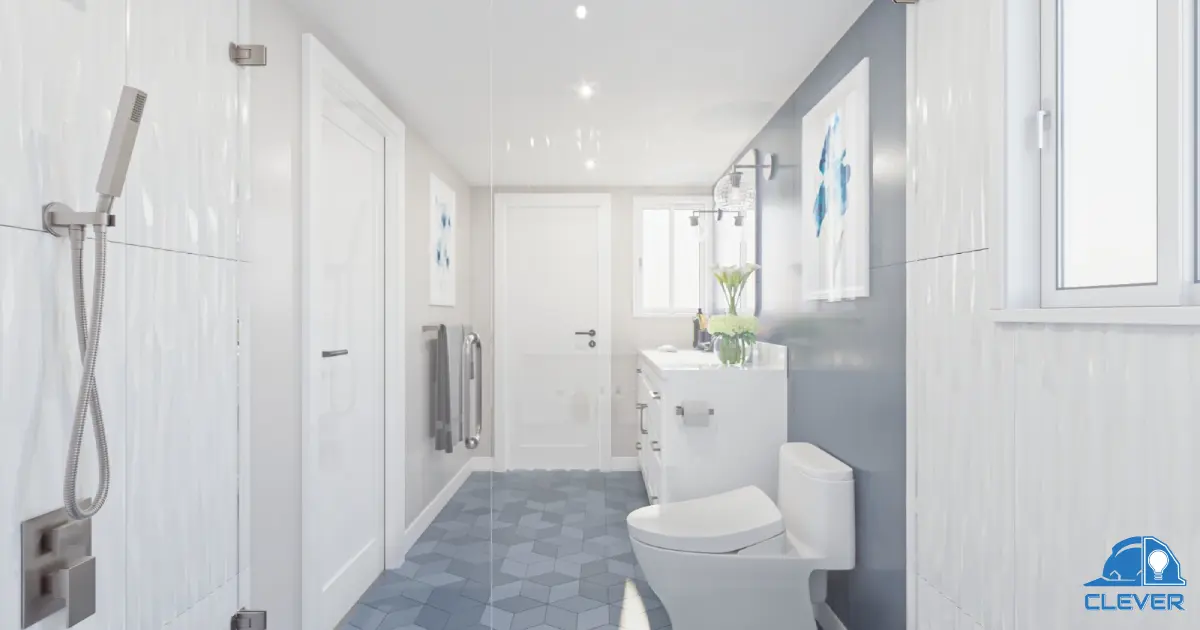
High-End Backyard Cottage in Palo Alto
Palo Alto, CA, allows for constructing backyard cottages, or detached ADUs, of up to 1,000/sq ft.
Average Cost: $500,000-$600,000
Interior Finishes:
- Natural stone tile, luxury vinyl, or hardwood flooring
- Luxury stone countertops, including marble, quartz, or soapstone
- High ceilings and exposed beams (Palo Alto, CA, legally allows for 16-foot ceilings in detached ADUs)
- High-end energy-efficient appliances
- Natural stone backsplash
Exterior Finishes:
- Vinyl or Hardie Board siding
- Metal roofing
- Energy-efficient double-pane or low-e-glass windows and luxury exterior doors
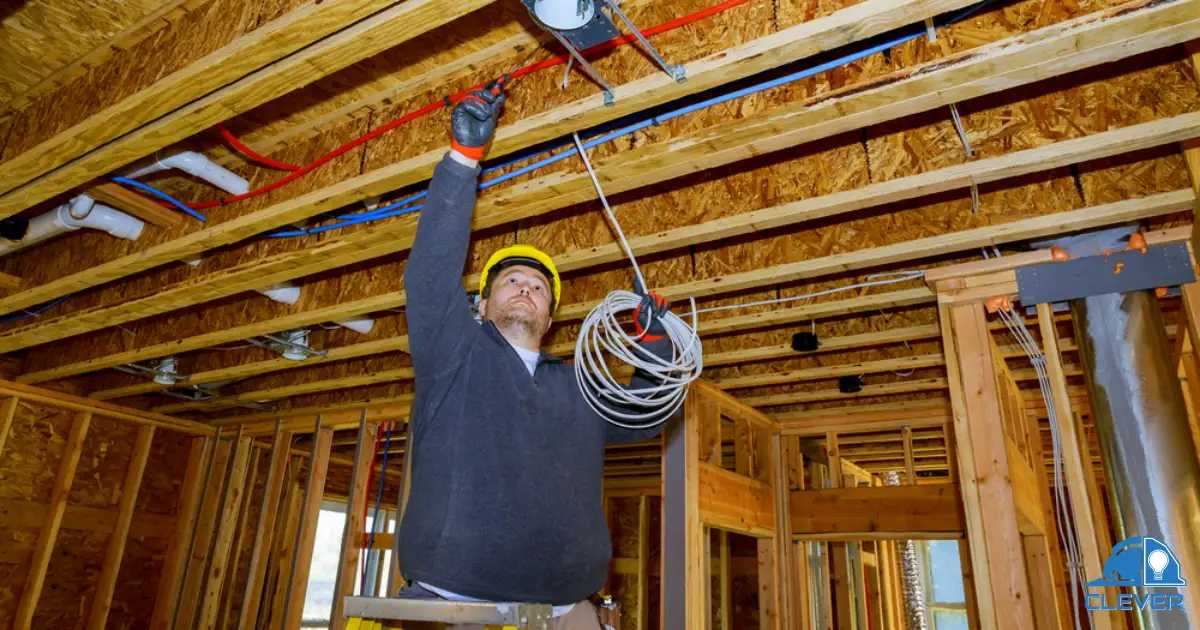
Hidden Costs and Budget Mistakes to Avoid
Building an ADU is fraught with unexpected costs, like any construction project.
On top of this, don’t be surprised when you make rookie mistakes.
The key to lessening the impact of mistakes and unexpected costs is to create a contingency fund and educate yourself about some of the most common mistakes.
Here are a few of the most unexpected costs you might encounter:
- Building permit costs
- Zoning assessment fees
- Waste management and disposal costs
- Utility expenses
- Project management costs
- Soil grading
- Sewage
Here are a few common ADU budget mistakes to watch for:
- Underestimating costs
- Poor design and planning
- Hiring the wrong design and construction team
- Overestimating your property’s size
Doing your homework is key, so when you are ready to get started, check out the California ADU regulations and guidelines.
Underestimating Permitting Time or ADU Permit Cost
Different jurisdictions have different permitting timeframes, but on average, it takes 1-3 months to receive your building permits.
Certain circumstances, including a complex design or HOA restrictions, can make it even longer to receive a permit.
As discussed above, ADU permit costs vary significantly between cities and municipalities.
Some cities have a flat fee, while others charge based on the construction costs or the project’s valuation.
Your best option is to visit your city’s official website or contact the clerk or building office to determine the exact cost of your ADU’s building permits.
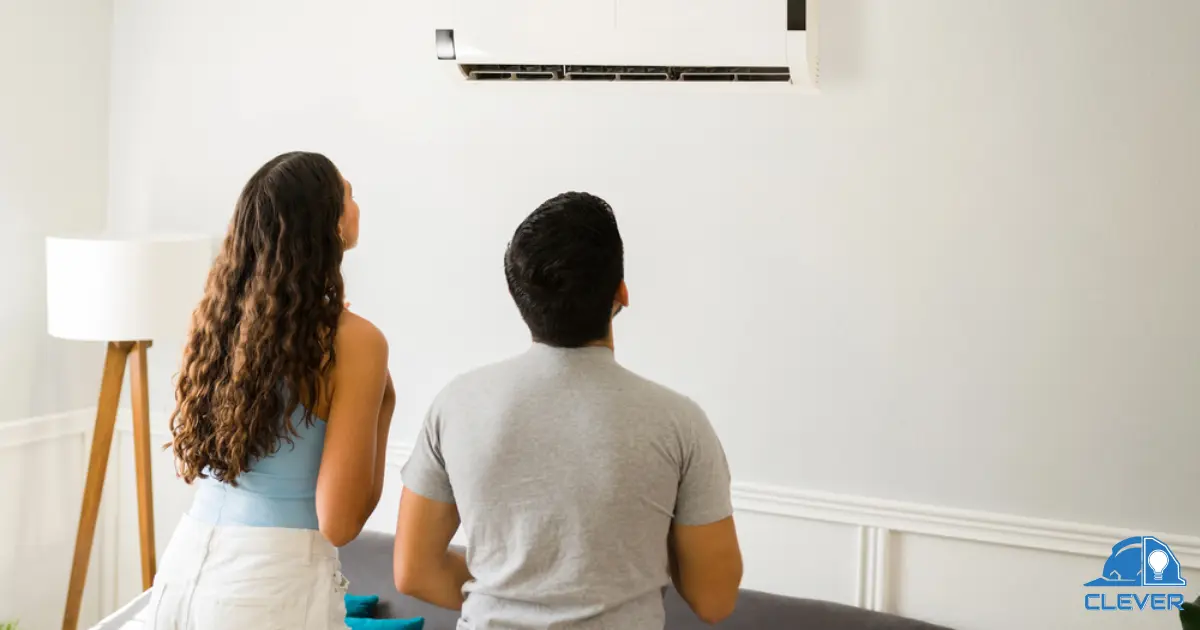
Not Planning for Utility Upgrades
Utility upgrades are dependent on the type of ADU.
For example, your utility costs will be higher if you are constructing a detached ADU or if the utility connections in your home are inadequate.
Attached ADUs with adequate utility hookups will cost far less.
On average, expect utility upgrades to electrical, plumbing, and HVAC to cost between $10,000-$30,000 in the Bay Area.
Choosing the Wrong Contractor or Design Team
Always choose a contracting and design team with the experience, know-how, and skills to construct ADUs.
Look for these qualities in a Bay Area construction team:
- Experience
- A track record of excellence
- Knowledge of local zoning and permit laws
- 3-D building technology
Inadequate Contingency Budget
Set aside at least 10% to 20% of your construction budget for unexpected accidents, unexpected costs, and other mistakes that seem to occur in most construction projects, including building an ADU.
Here are a few unexpected costs your contingency budget will cover:
- Site preparation and conditions
- Price Inflation
- Labor shortages
- Accidents
Can You Save Money with a Prefab ADU?
The average design phase for a custom ADU can take 3-6 months.
A prefabricated ADU is based upon a pre-approved design and is typically constructed off-site, and the pieces are put together in your backyard like a puzzle.
Learn about the ins and outs of prefab vs custom-built ADUs and how much you could potentially save.
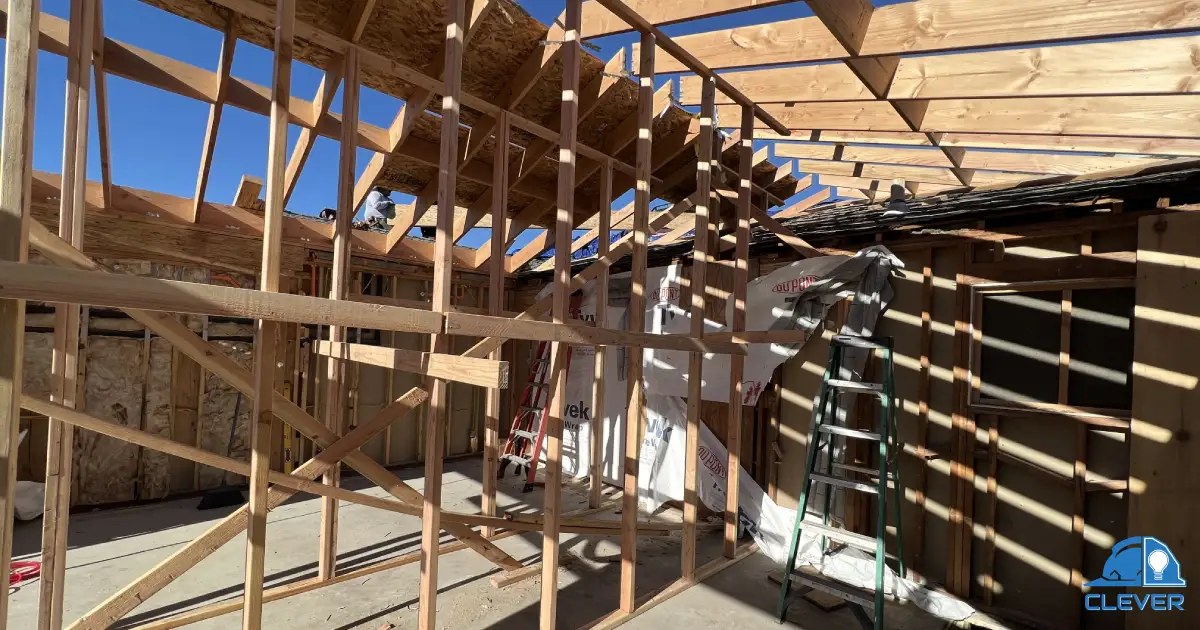
Pros and Cons of Prefab vs Stick-Built
A traditionally constructed ADU and a prefab model each have their pros and cons, including:
Stick-Built
Pros:
- Customization
- Design flexibility
- Maximize the space
- High-end finishes
Cons:
- Higher costs
- Longer design phase
- Slower installation
- Longer permitting process
Prefabricated ADU
Pros:
- Cost-effective
- Sustainability
- Quick installation
- Many cities expedite the permitting process based on pre-approved plans
Cons:
- Lack of customization
- Transportation costs
- Potential zoning issues
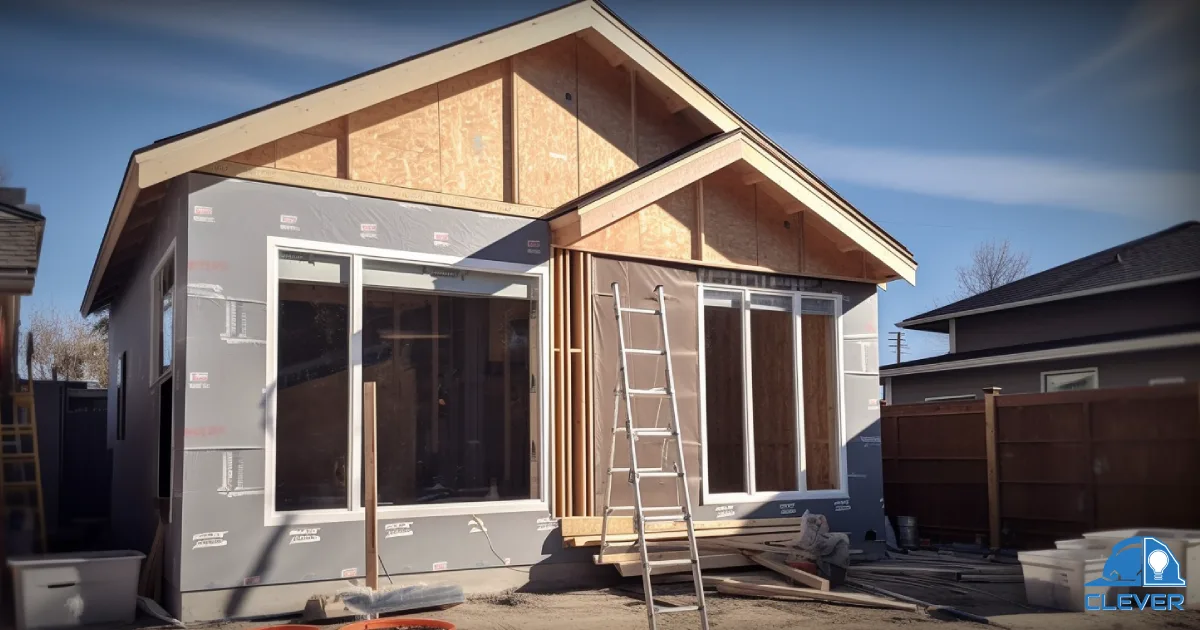
Bay Area Prefab Builders to Consider
You’ve decided that prefab is the way to go; now, you just need a quality builder.
Here are a few qualified candidates in the Bay Area:
- Adobe
- Acton ADU
- Perpetual Homes
- Roof and Realm
Cost Comparison: Prefab vs Custom-Built
The average cost to build a custom-built ADU is $150,000-$475,000.
The average prefab ADU can be purchased for between $100,000-$300,000.
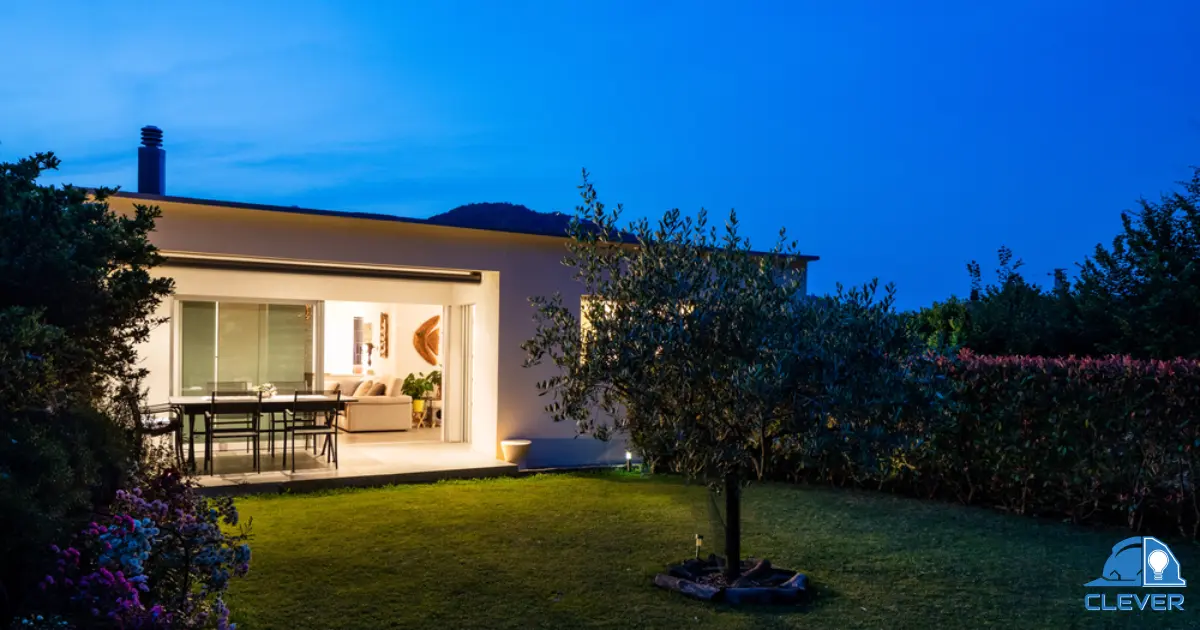
Financing Options for ADU Construction
The increasing popularity of ADUs in the Bay Area has done more than ease local regulations with your local planning department.
It has also created several opportunities to finance your project.
Here are a few of the most popular:
Home Equity Loans or HELOCs
Home equity loans provide a homeowner with a lump sum of money based on the acquired equity you have accrued from your primary homes.
A HELOC, or home equity line of credit, is a more flexible option that allows you to borrow money from your home’s equity as needed.
Cash-Out Refinancing
Another option is to use your home’s equity to finance the project.
A cash-out refinance allows you, as the homeowner, to refinance your current mortgage and take out the money rather than lessening the life of your mortgage.
Finance Your ADU in California with Local Grant Programs and Incentives
Many cities offer their own grants and incentives for constructing ADUs.
One of the most significant state-wide programs is the California Housing Finance Agency grant, which offers homeowners $40,000 toward pre-development and closing costs.
Construction Loans and Builder Financing
Specific ADU construction loans are available, but if you choose an unsecured loan, you will pay a higher interest rate.
Several builders allow you to finance the project directly through them according to their terms and interest rates.

Does Building an ADU Increase Property Value in the Bay Area?
Determining the ROI, or return on investment, of an ADU in the Bay Area can be tricky and depends on the project’s size, scope, and intended use.
On average, you can expect your ADU project to raise your property values by 20%-30%!
ROI for Rental Income
Many homeowners are constructing ADUs to create a new source of rental income.
On average, a studio or one-bedroom ADU will generate $2,000-$2,500/month in rental income.
A two-bedroom ADU can be rented for at least $3,000/month in the competitive Bay Area.
Resale Value Boost
If you invest $400,000 in your ADU and your home is worth $2,000,000, if you obtain a 30% boost in your property value, your home will be worth $2,600,000!
In addition to boosting your resale value, the ADU is attractive to potential buyers.
Multigenerational Living Benefits
Building an ADU provides a modern solution for an age-old problem: Providing safe housing for aging parents and grandparents.
Many homeowners construct attached and detached units to house their young adult children or as granny flats for their older relatives.
ADU Cost Comparison: Bay Area vs. Other California Regions
You have a great understanding of ADU costs, region-specific limitations, and prices, including Santa Clara County ADU zoning and regulations.
Here is how the average costs of constructing an ADU in the Bay Area compare to two other metropolitan areas in California:
Bay Area vs Los Angeles
- Bay Area: $150,000-$475,000
- Los Angeles: $100,000-$400,000
Bay Area vs Sacramento
- Bay Area: $150,000-$475,000
- Sacramento: $100,000-$300,000
Why Bay Area Prices are Higher
The San Francisco area is an idyllic place to call home, that is until you realize how much more expensive everything is in the Bay Area.
ADU construction costs are, on average, higher than anywhere else in California for several reasons, including:
- Labor shortages
- Material demands
- Higher average home prices
- Skilled labor demands
- Restrictive building codes
- Higher land costs and values
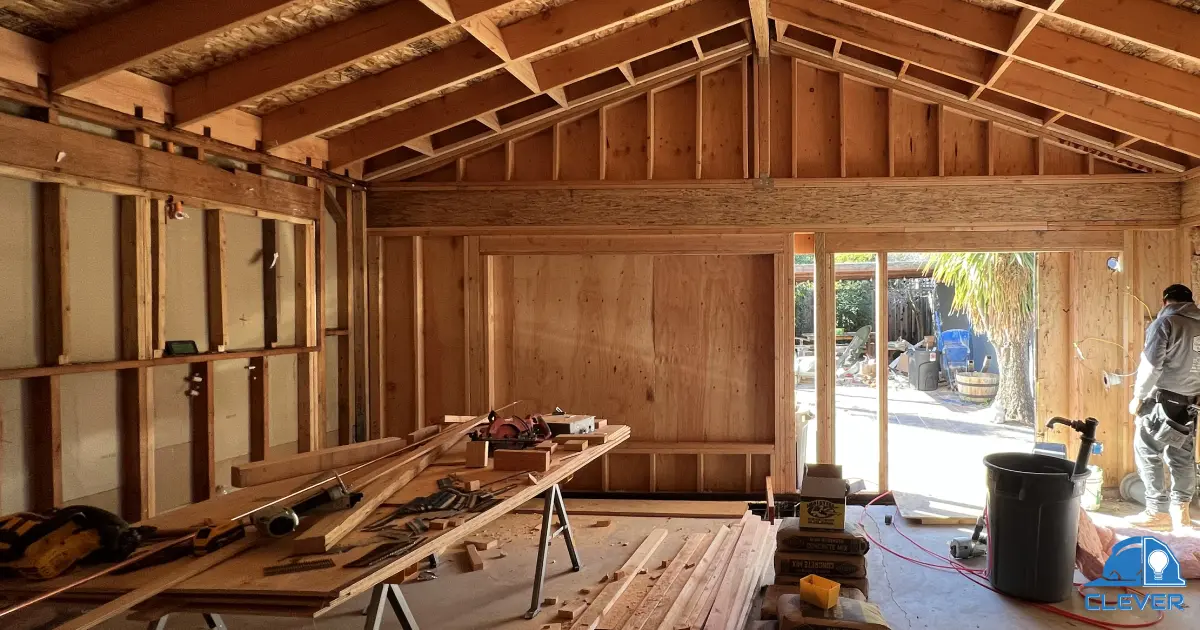
How Long Does It Take to Build an ADU in the Bay Area?
From the planning and permitting to the final walkthrough, it takes anywhere from 6-12 months on average to complete an ADU project in the Bay Area.
Several factors impact this timeline, including:
- Project’s scope
- Contractor and material availability
- Permitting process
- Utility upgrades
- HOA restrictions
Design and Permitting Timeline
- Design phase: 1-3 months
- Permitting phase:
- Prepare for the project. 2-4 months
- Research local ADU rules and regulations
- Apply for an ADU permit
- Application review: 2-3 weeks
- Plan review: 2-4 months
- Permit issuance: 2 weeks
Construction Timeline
Overall timeline: 4-6 months:
- Site preparation and foundation (if applicable)
- Framing, roofing, and drywall
- Utility upgrades and installation
- Windows and doors
- Fixtures and finishing touches
- Final inspection
Tips to Speed Up the Process
Are you itching to enjoy your new ADU?
Speed up the process by following these tips:
- Work with experienced contractors
- Start the permit process ASAP
- Get pre-approved for a loan or refinance
- Define your goal early
- Stick to your budget
- Understand potential roadblocks and pitfalls
Tips for Hiring the Right ADU Contractor in the Bay Area
With all of the fantastic ADU contractors throughout the Bay Area, how do you find a designer and builder who will help you realize your vision and stay on budget?
This seems like a tall order, but it doesn’t require hours of online sleuthing to find the right team.
Here is the best strategy for hiring a fantastic ADU building team:
What to Look for in a Licensed Builder
Foremost, your builder should be fully and legally licensed through the Department of Consumer Affairs.
Remember, there are other intangible qualities to seek out in a fantastic local San Francisco Bay Area ADU fabricator, including:
- Unparalleled communication skills
- Flexibility throughout the project
- Experience handling construction emergencies
- Trustworthiness and a great reputation
- Efficiency
- Transparency
- Organization
Burning Questions to Ask During the First Consultation
We recommend scheduling, at the very minimum, three to four initial consultations with licensed ADU builders in your area.
Asking the right questions is always crucial to understanding each contractor’s philosophy and what they can offer you as a consumer:
- Do you have the proper licensing and insurance?
- Can you provide referrals?
- What is a typical building schedule?
- Will you take care of permits?
- Will you hire subcontractors?
- Can you provide a timeline?
- How do you handle unexpected fees and setbacks?
Beware of Unscrupulous Contractors: Red Flags to Always Watch Out For
Hiring a contractor can be a little tricky, especially if this is your first experience building an ADU in your backyard.
Learning about potential red flags or contractor scams is equally essential to ensure you don’t waste your money.
Here are a few telltale signs you need to think twice about hiring a Bay Area ADU contractor:
- Demanding a large payment up-front. A reputable contractor will create a feasible payment schedule and never expect you to pay before the work is done.
- Only accepting cash. Be wary of a contractor who only accepts cash or doesn’t offer a receipt. Work with a contractor who puts everything in writing and accepts multiple forms of payment.
- A very low bid. Most contractors’ bids will typically be very competitive. If one bid is far lower, use caution because chances are, they are able to charge less because of a lack of proper licensing, inferior equipment, or hiring unqualified workers.
- Charging for your first consultation. The first consultation should be thorough, informative, and, most importantly, completely free.
- There is no official website or phone number. If you have trouble finding the website or phone number, take this as a sign to keep looking.
Hiring the best ADU contractors in California, Clever Design and Remodeling, can save you a lot of time.
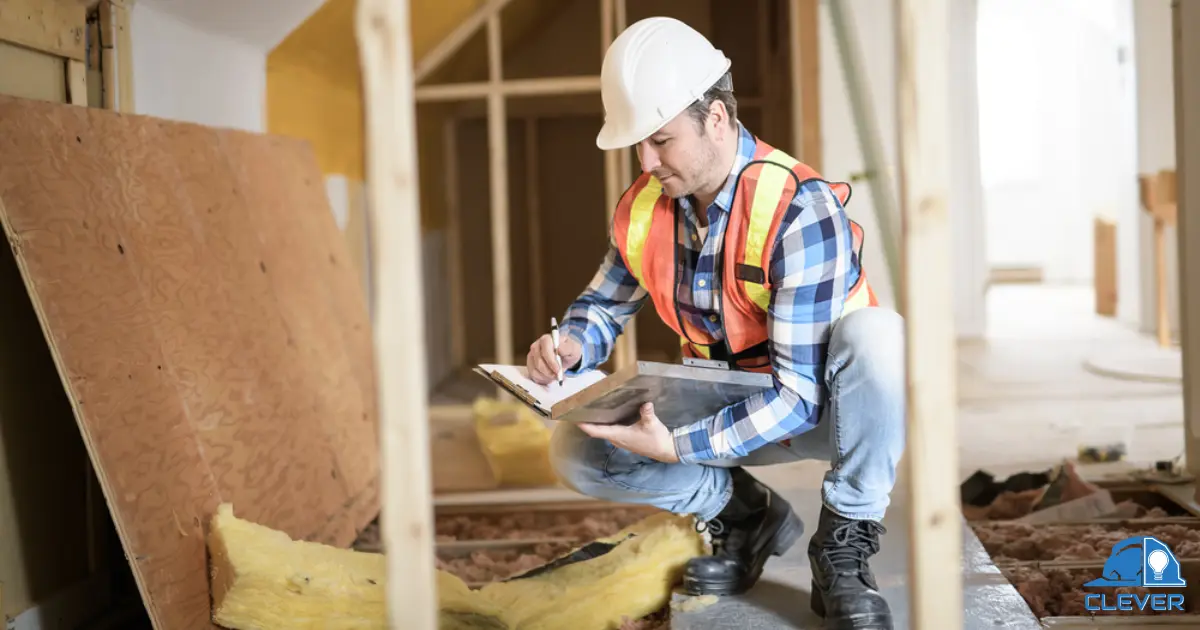
Need Help Building an ADU in the Bay Area?
Whether you are trying to generate rental income, want to increase your home’s value, or simply want a safe place for your aging parent to call home, you cannot wait to take the first step in building a backyard ADU.
This process doesn’t happen overnight, and you cannot do it all alone.
You will need help from the best; that is exactly what you can always expect when working with the rockstar team from Clever Design and Remodeling.
Our experts can provide a San Jose ADU cost breakdown or help you navigate the County of San Mateo accessory dwelling unit ordinance.
Why Working with Local Experts Matters
Hiring locally has many benefits, including:
- Familiarity with local laws and restrictions
- A fast response time and open communication
- One-of-a-kind service
- Support the local economy
- Knowledge of the area
Free Consultations and Cost Estimates Are Available
We offer no obligation, fast consultations, and a thorough cost breakdown of all hard costs, soft costs, and expenses related to your San Francisco-area construction project.
This includes direct construction costs, such as labor, materials, and equipment, and indirect costs, such as taxes, fees, insurance, and permits.
Conclusion: Always Plan Ahead to Stay on Budget
Are you excited to get started planning your new ADU project in San Jose, Hillsborough, or any of the other amazing cities throghout the Bay Area?
Contact us today to get the ball rolling!
We specialize in creating a realistic budget and have the experience necessary to help you stay on budget until the very end.
From tracking all expenses with state-of-the-art budgeting software to prioritizing needs, researching costs, and creating a contingency fund, we can help you help yourself manage your ADU construction budget.
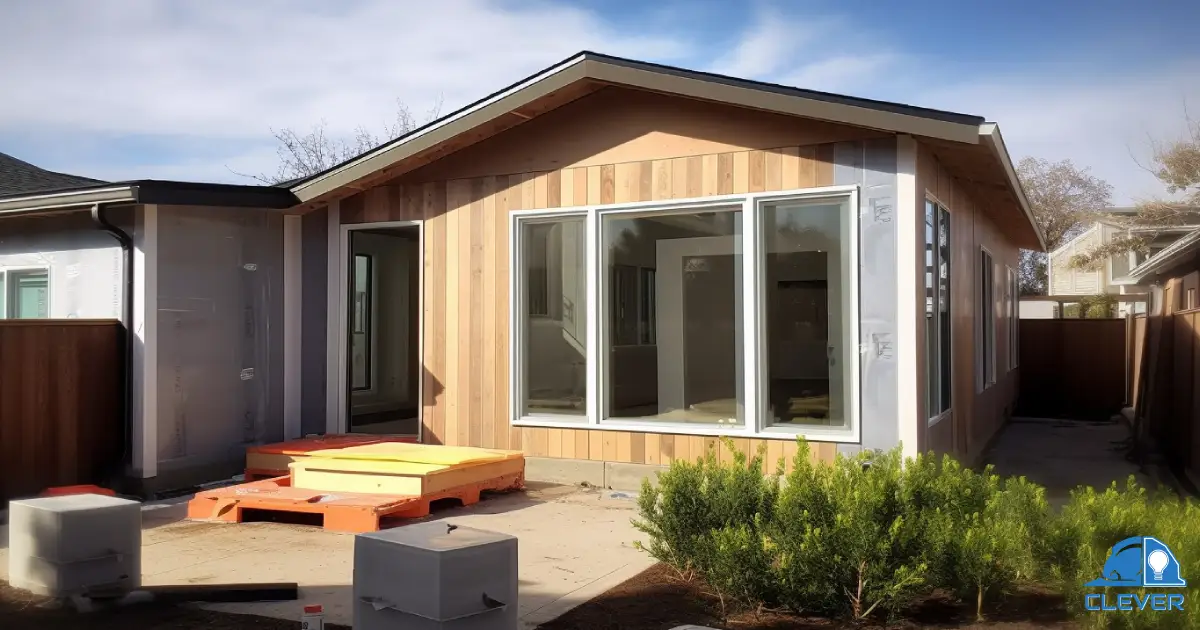
Frequently Asked Questions About Accessory Dwelling Units
What’s the cheapest type of ADU to build?
If the cost is a huge concern, a garage conversion ADU is the most cost-effective option.
The average garage conversion in the San Fran Bay Area costs between $80,000-$200,000.
Of course, there are ways to save even more money on your garage conversion ADU, including:
- Opt for a more simplistic, basic design
- Repurpose cabinets, hardware, artwork, and other accessories
- Create a simple kitchenette with smaller appliances
- Build a studio ADU
- Tackle some DIY projects, like painting or installing hardware or fixtures
Are there any Bay Area cities offering ADU incentives?
Several Bay Area cities and cities throughout California offer tax breaks, expedited permitting, and other incentives for homeowners building ADUs.
For example, San Francisco has streamlined its ADU permitting process, and San Jose allows its homeowners to sell their ADUs separately from their main house.
East Palo Alto provides low-interest loans of up to $100,000 to qualifying homeowners, and Oakland has several pre-approved ADU plans.
Can I build an ADU on my property without parking?
The answer is “it depends” based on your location.
For example, some cities require you to have at least one parking space for newly constructed ADUs.
Other areas offer exemptions, including:
- ADUs constructed in historic neighborhoods
- ADUs constructed within a certain distance from public transportation
- ADUs constructed from part of the existing structure, such as a garage conversion
How much does it cost to build a 500 sq ft ADU in 2025?
A 500-square-foot ADU in the Bay Area would be classified as a junior accessory dwelling unit, or JADU, and in 2025, it would cost between $60,000 and $150,000 to construct.
What’s the return on investment for an ADU?
Calculating the average ROI on an ADU is dependent on its size, budget, and intended use.
For example, a rental property’s ROI is higher than that of a unit intended for personal use.
On average, you can expect an 8%- 10% ROI from your investment. But remember, the construction will raise your home’s value by 20%- 30%.
